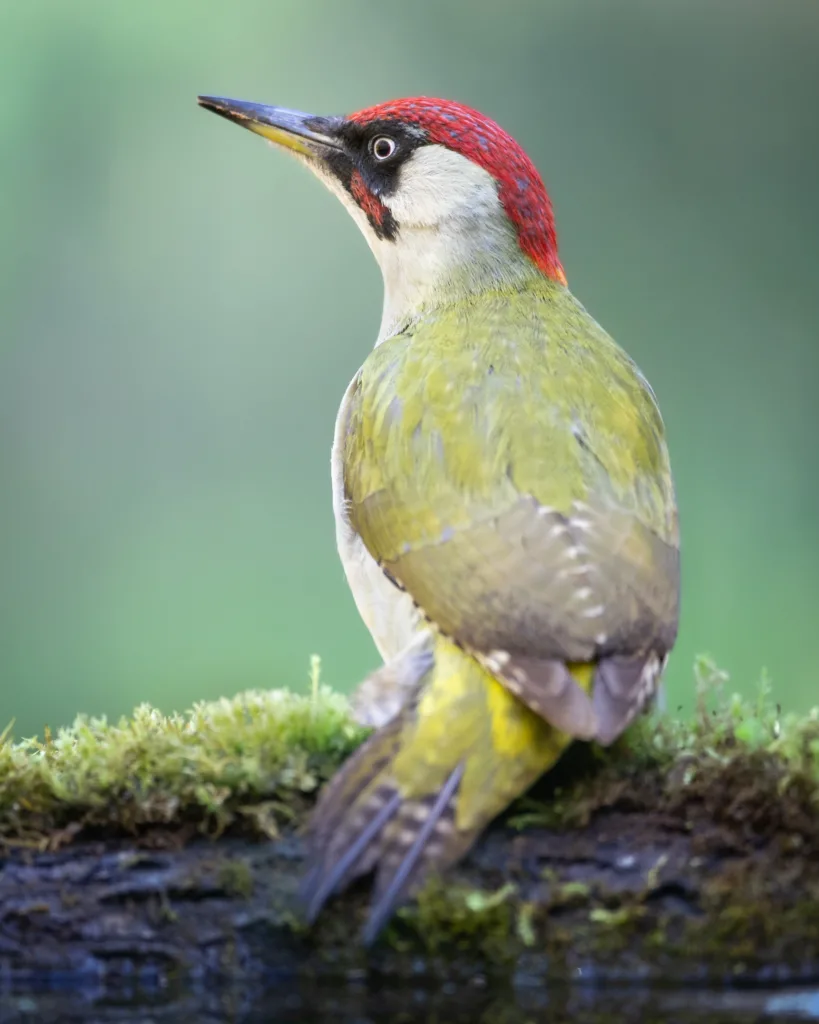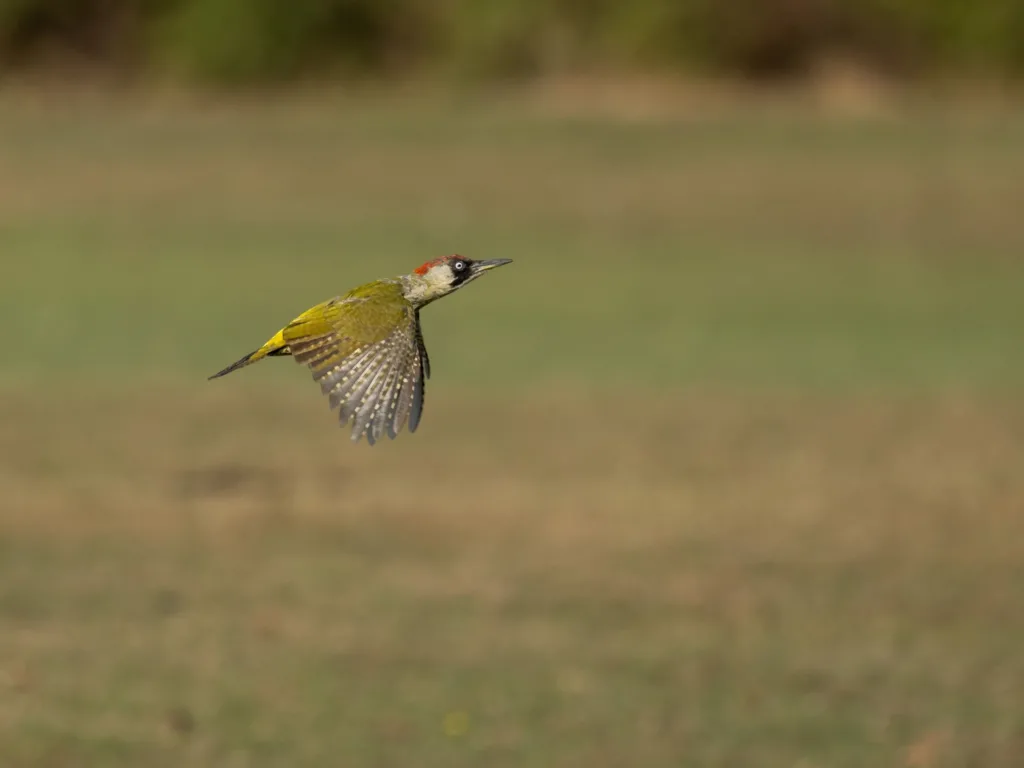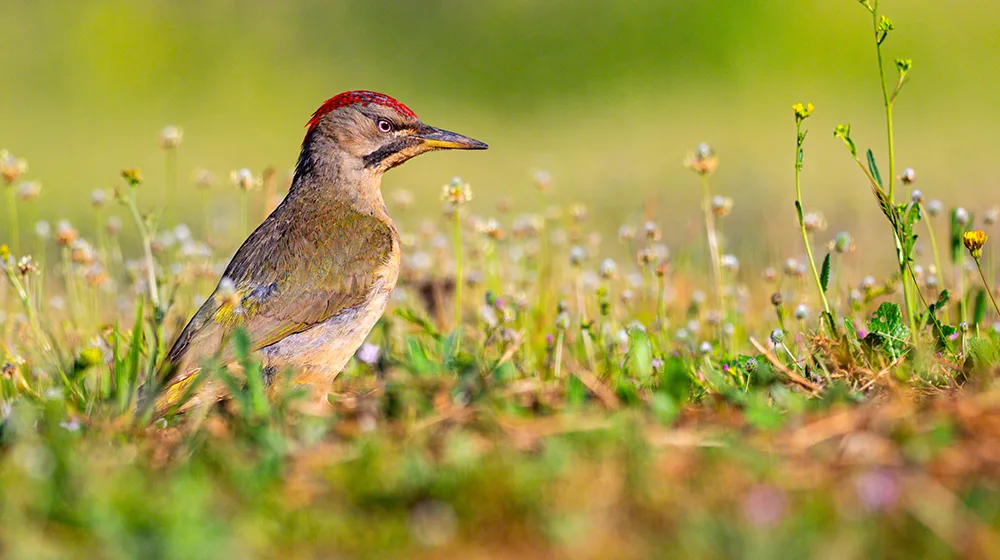A penguin in emerald and scarlet – Jane Adams recalls her first magical garden encounter with the unforgettable green woodpecker

Can you remember the first time you met a green woodpecker? I say ‘met’, as this is no ordinary bird, and any encounter with one feels strangely special.
My own first meeting was in a small, semi-suburban garden during a hot summer in the 1990s. Sitting on a bench with my mum, enjoying a cuppa, one appeared on the lawn. We froze, mugs held in mid-air, staring at this strange but beautiful bird not ten feet in front of us. Though its emerald-green feathers, scarlet cap and black eye patches were impressive, it was its size that really surprised us. I remember telling a friend afterwards, ‘It was huge. Like a penguin!’
They laughed.
Obviously, it wasn’t – green woodpeckers are more the size of a pigeon – but they carry with them an aura, a magic, that makes them appear larger than life.

Fiddlesticks and flapdoodle!
No wonder, then, that this bird has held a special place in our imaginations for centuries. The name Yaffle comes from the green woodpecker’s laughing, or ‘yaffling’, call – an onomatopoeic nickname still heard in Dorset and across the West Country today.
Country folk also knew them as the rain-bird – said to call more often during humid weather. Whether that’s true, I don’t know. But if you were born in the 1960s or 70s, you will probably recognise him as Professor Yaffle – a carved wooden bookend in Bagpuss, known for saying “Fiddlesticks and flapdoodle!”.
He was a wise old bird, with round scholarly glasses who waddled around with an inflated air of superiority.
In the wild, you might see them waddling – or bounding, if they’re in a hurry – around meadows looking for yellow meadow ants, which they catch by the hundreds with their long, sticky tongues. After probing the ground with their beaks, they deploy their ten-centimetre tongues like tiny grappling hooks in order to catch the ants. When not in use, their tongues retract and wrap around the inside of their skulls: they are one of only a few birds able to do this.
As summer draws to a close, you might spot this year’s fledglings venturing out on foraging trips with their parents. Dorset’s chalk grasslands and unimproved meadows, where anthills are plentiful, make for perfect hunting grounds. Sadly, this type of habitat is becoming increasingly rare: something conservationists are worried could affect the green woodpecker’s long-term survival.
That day in the 90s, our woodpecker prodded the grass twice, decided ants were in short supply, and took off in a flurry of green. As it undulated across the neighbours’ gardens like a runaway rollercoaster, we heard its yaffle echo round the cul-de-sac.
It was laughing at us, I’m sure of it.



